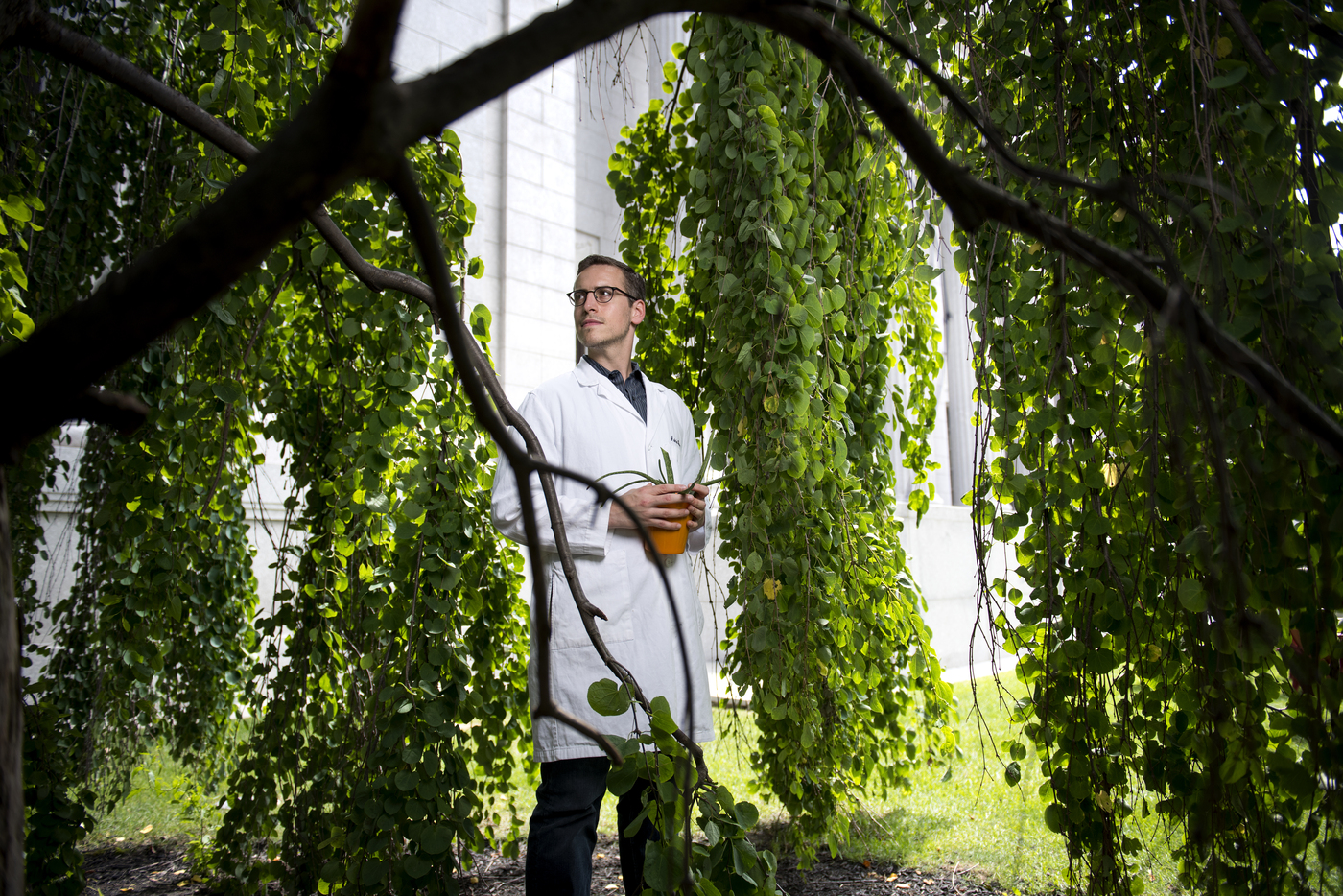by Allie Nicodemo
The field of medicine has come a long way from using heroin as a cough remedy or magnet therapy to improve blood flow. These outdated methods were put to bed decades ago. But there are plenty of ancient medicinal practices that have stood the test of time. In fact, many of the life-saving pharmaceuticals we rely on today are derived from plants first discovered by indigenous communities.
Ethnobotany is the scientific study of traditional plant knowledge. It’s what gave us morphine, aspirin, and ephedrine, to name a few. And there is still untapped potential.
In a paper published on Tuesday in Trends in Biotechnology, Northeastern University doctoral candidate John de la Parra described a new field called ethnophytotechnology. It’s the use of plant biotechnology to improve the plant-based drug discovery pipeline.
“New production, engineering, and analysis methods have made it easier to meet scientific challenges that have confronted traditionally used plant-derived medicines,” said de la Parra, PhD’18, who is earning his doctorate in chemistry. “It is our hope that as the field expands, rich troves of indigenous knowledge can find prominence within innovative drug discovery and production platforms.”
In collaboration with Cassandra Leah Quave, a medical ethnobotanist at Emory University, de la Parra examines the vast opportunities for ethnobotany and ethnophytotechnology to promote new drug discovery and solve health challenges. Here, he and Quave take a deeper dive into their recent paper.
You mentioned that traditional plant knowledge has been the foundation of some important medicines. Could you share some examples?
de la Parra: Plants have given us some of our oldest and most important medicines and there are countless examples, from aspirin to the chemotherapy drug Paclitaxel, crossing cultures across the world. Historically, to practice medicine or pharmacy has usually meant, in some regard, to be a botanist.
An interesting place to start is by looking at diseases that we know existed in the ancient world and still persist today. Take malaria for example. An extract from the bark of the cinchona tree was traditionally used to treat victims of this parasitic disease. Chemists then isolated quinine from this plant and until fairly recently, quinine derivatives were our most important anti-malarial drugs. However, the isolation of this type of single molecule treatment led to the rise of quinine-resistant malaria. Luckily, traditional plant knowledge came to the rescue with artemisinin. This compound was discovered by 2015 Nobel laureate Tu Youyou when she consulted a nearly 2,000-year-old Chinese medicinal text that described methods to extract the plant Artemisia annua.
The paper suggests that using indigenous knowledge for drug development is more important now than ever. Why is that?
de la Parra: There are many reasons why plant medicine is so important right now. Cassandra’s work has focused on the alarming rise of drug-resistant infections—infections for which we have no effective treatments. Plant-derived drugs present the potential for novel drug scaffolds that often have a history of safe and effective usage.
I tend to think about my work from a broad perspective. A rapidly expanding global population with ever-growing economic disparity has led to shocking inequalities in medical treatment. In the West, pharmaceutical companies have focused more on diseases of the affluent—chronic diseases—and less on improving treatments for acute infections that tend to affect the developing world. Many of these areas of the world also rely on traditional plant treatments. Ethnophytotechnology is a chance for combined expertise—the West’s mechanization and biotechnology strengths combined with the developing world’s thousands of years of rich ethnobotanical knowledge—to find and develop effective drugs for otherwise neglected diseases. This is all at a time when we see those same diseases spreading around the world despite our artificial borders—think of Zika, Ebola, and Chagas disease for instance.
Quave: We’re entering into a new era of medicine—one in which previously useful antibiotic compounds are losing their ability to effectively treat microbial infections. Although we’ve recently come to rely more and more on synthetic chemistry for the generation of medically important drugs, humankind shares a long and extensive history in which nature was the major source of cures for various maladies. The advantages of ethnophytotechnological innovation, represented by the merger of traditional knowledge with technological advancement, will be an increased ability to tap into nature’s resources to sustainably produce large quantities of novel chemical entities to fill the drug discovery pipeline in the future and better address emerging medical needs.
How can it be assured that indigenous populations and practices are not damaged by the biomedical field?
de la Parra: As an ethnobotanist, someone whose concern is the honoring and preservation of human plant knowledge, this is a huge and primary concern. First it must be acknowledged that the historical record is full of accounts of how many indigenous communities have been preyed upon, destroyed, and systematically dismantled by greedy interests. Then, the international community must agree upon and enforce regulations to protect indigenous people, knowledge, and culture. The Nagoya Protocol is an important first step for individual researchers and corporations to follow, even if one’s home country is not a signatory. It sets forth important standards for researchers and protections for indigenous communities.
Why did you get into this type of research? What is your inspiration for pursuing ethnobotany and ethnophytotechnology?
de la Parra: I grew up on a farm in Alabama where we lived closely with plants and relied on them for many things. I remember being fascinated by my grandmother’s use of plants as medicine. As I began my academic pursuits I often felt that the scientific community was skeptical of the idea of plant-derived medicine. And truthfully, there has been a lot of misinformation disseminated about plant remedies. Biotechnology provides the rigor, accuracy, and reproducibility to help dispel scientific apprehension about plant-derived treatments and that’s why I work at the interface of ethnobotany and biotechnology.

